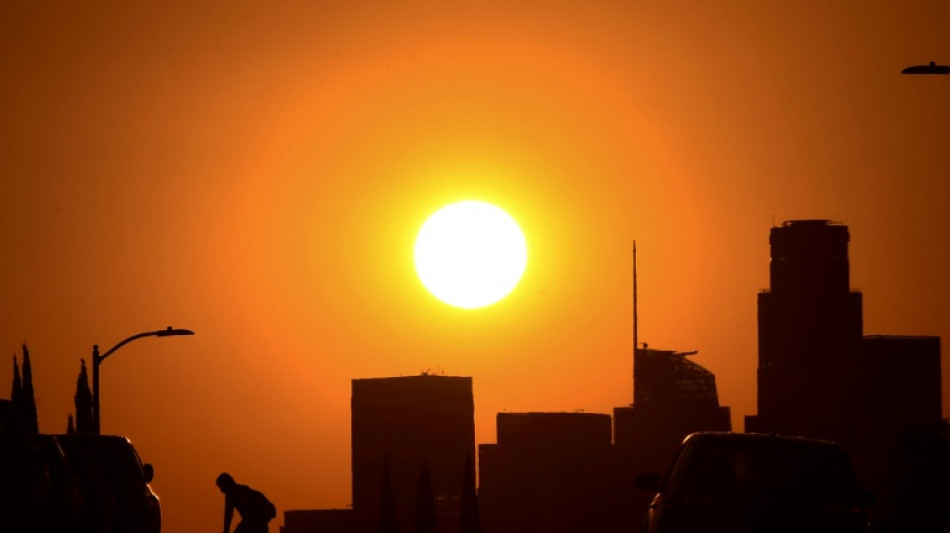
CMSC
0.0650


Whether out-of-the-box thinking or a sign of desperation, scientists on Wednesday proposed the regular transport of moon dust to a gravity point between Earth and Sun to temper the ravages of global warming.
Ideas for filtering solar radiation to keep Earth from overheating have been kicking around for decades, ranging from giant space-based screens to churning out reflective white clouds.
But the persistent failure to draw down planet-warming greenhouse gas emissions has pushed once-fanciful geoengineering schemes toward centre stage in climate policy, investment and research.
Blocking one to two percent of the Sun's rays is all it would take to lower Earth's surface by a degree or two Celsius -- roughly the amount it has warmed over the last century.
The solar radiation technique with the most traction so far is the 24/7 injection of billions of shiny sulphur particles into the upper atmosphere.
So-called stratospheric aerosol injection would be cheap, and scientists know it works because major volcanic eruptions basically do the same thing. When Mount Pinatubo in the Philippines blew its top in 1991, it lowered temperatures in the northern hemisphere by about 0.5C for nearly a year.
But there are serious potential side-effects, including the disruption of rain patterns upon which millions depend for growing food.
However, a new study in the peer-reviewed journal PLOS Climate explores the possibility of using moon dust as a solar shield.
A team of astronomers applied methods used to track planet formation around distant stars -- a messy process that kicks up vast quantities of space dust -- to Earth's moon.
Computer simulations showed that putting lunar dust at a gravitational sweet spot between Earth and Sun "blocked out a lot of sunlight with a little amount of mass", said lead author Ben Bromley, a professor of physics at the University of Utah.
- 'Balancing marbles' -
The scientists tested several scenarios involving different particle properties and quantities in different orbits, looking for the one that would throw the most shade.
Moon dust worked best. The quantities needed, they said, would require the equivalent of a major mining operation on Earth.
The authors stressed that their study was designed to calculate potential impact, not logistical feasibility.
"We aren't experts in climate change or rocket science," said co-author Benjamin Bromley, a professor at the Harvard-Smithsonian Center for Astrophysics.
"We were just exploring different kinds of dust on a variety of orbits to see how effective this approach might be," he added. "We don't want to miss a game changer for such a critical problem."
Experts not involved in the study praised its methodology but doubted whether it would actually work.
"Placing moon dust at the gravity mid-point between Earth and Sun, can indeed reflect heat," said University of Edinburgh professor Stuart Haszeldine.
"But this is like trying to balance marbles on a football -- within a week most dust has spun out of stable orbit."
For Joanna Haigh, an emeritus professor of atmospherics at Imperial College London, the study is a distraction.
The main problem, she said, "is the suggestion that the implementation of such schemes will solve the climate crisis whereas it just gives polluters an excuse not to act."
J.Ayala--TFWP